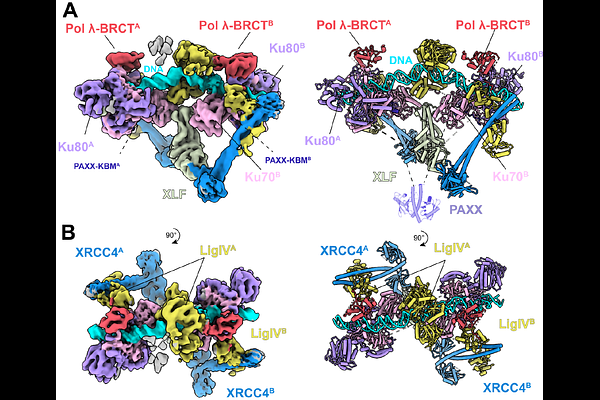End Processing in NHEJ by Polymerase {lambda} and PNKP is coordinated during short-range synapsis

End Processing in NHEJ by Polymerase {lambda} and PNKP is coordinated during short-range synapsis
Vogt, A.; Kaminski, A. M.; Pedersen, L. C.; Naila, T.; Tomkinson, A. E.; Lees-Miller, S. P.; Kunkel, T. A.; He, Y.
AbstractNon-homologous end joining (NHEJ) is a major pathway of DNA double strand break (DSB) repair, capable of directly joining both damaged strands of DNA through the coordinated activities of repair factors that detect the termini, physically bridge them together, and perform the chemistry necessary to complete repair. NHEJ is capable of repairing a variety of damaged DNA, employing various accessory end-processing factors to resolve chemically blocked ends, trim overhangs, and fill gaps in order to achieve directly ligatable DNA ends. To investigate the molecular mechanisms underlying end-processing, we determined the cryo-EM structure of the NHEJ specific polymerase Pol {lambda} bound to the short-range synaptic complex, uncovering the mode of its recruitment to the complex as well as a putative model for its activity. Furthermore, the coordinated end-processing activities of the short-range (SR) synaptic complex simultaneously bound by both Pol {lambda} and PNKP, another accessory factor, demonstrates the ability of NHEJ to form large, multifunctional repair complexes capable of processing a variety of different DNA end structures to effect repair.